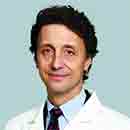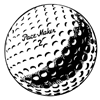'Lactose Intolerance' Actually Proves To Be A Casein Sensitivity
DEAR DR. ROACH: My wife believed she had lactose intolerance. After some tests, it was found that she was sensitive to casein rather than lactose. Are there other things in cow's milk besides lactose and casein that people are sensitive to? -- K.A.
ANSWER: There are three main components of cow's milk that can lead people to having a bad reaction.
Lactose is a type of compound sugar called a "disaccharide," which includes two separate single sugars ("monosaccharides") -- glucose and galactose -- that are connected by a chemical bond. This chemical bond is broken by a specific enzyme called lactase. Deficiency is rare in children but common in adults, especially in people with ancestry from Asia and Africa, as well as Native Americans.
Without the ability to break lactose into its component monosaccharides, a person is likely to get abdominal cramps, gas and diarrhea if they consume lactose. This is because lactose passes into the colon, where colonic bacteria will digest the lactose and produce gas (and discomfort). There is a wide variety in the amount that people need to consume to have symptoms, with some people being exquisitely sensitive and others needing a fair amount of it to develop symptoms.
Milk allergies are different. Eighty percent of adults with cow's milk allergies are women. Cow's milk allergies are most commonly due to the protein casein (the "curds" of the nursery rhyme) but may also be due to whey protein. People who are allergic to whey protein often have less symptoms if the protein is heated or cooked (for example, milk in baked goods) or if it is changed by digestive enzymes, as in yogurt.
Cow's milk allergies can have various symptoms. They can be serious and cause anaphylaxis, a life-threatening allergic reaction. But they may also cause symptoms that people might not recognize as a food allergy, such as skin changes, symptoms of the mouth and esophagus, and food- and exercise-associated anaphylaxis. Some people develop eosinophilic esophagitis, which can resemble gastroesophageal reflux disease; this causes heartburn that doesn't respond to the usual treatments.
This is only a brief overview of a complicated topic that generally requires an expert in allergy and immunology to help diagnose and manage the condition.
DEAR DR. ROACH: I have a "trigger thumb." My thumb no longer bends at the middle joint and hurts. Exercise doesn't seem to work. I tried physical therapy, too, without results. -- A.M.
ANSWER: Stenosing flexor tenosynovitis, aka trigger finger, is a common issue I see very frequently in my clinical practice. Symptoms usually start with some "catching" or locking of the fingers while flexing and extending one or more of them. This may progress to discomfort or pain and can progress to the point where a finger or thumb is locked in place and needs to be bent by the other hand.
Initial treatment includes rest and anti-inflammatories. Some experts use a splint to reduce the trauma from repetitive movement in the pulley system of the hand. If conservative treatment isn't effective, most hand experts will try an injection of a steroid into the area of the pulley and tendon. Surgery is an option if two or three injections haven't solved the problem.
========
Dr. Roach regrets that he is unable to answer individual letters, but will incorporate them in the column whenever possible. Readers may email questions to ToYourGoodHealth@med.cornell.edu.
(c) 2025 North America Syndicate Inc.
All Rights Reserved









Comments